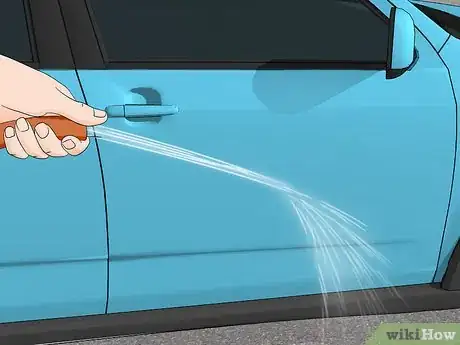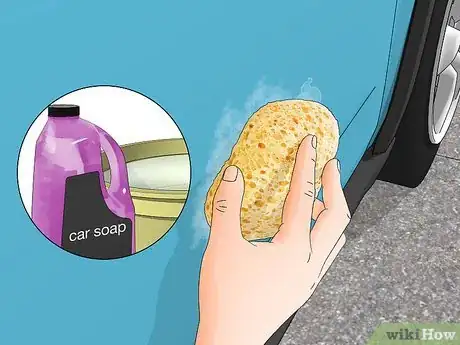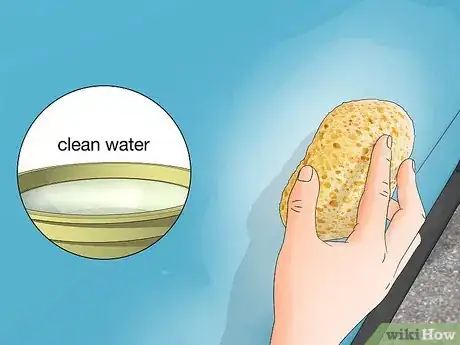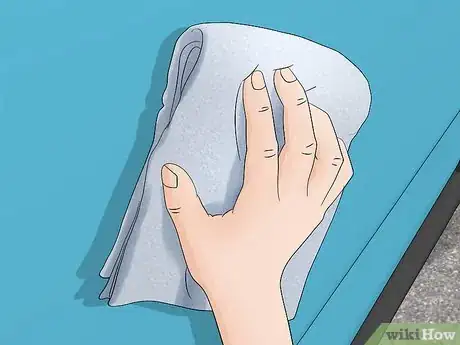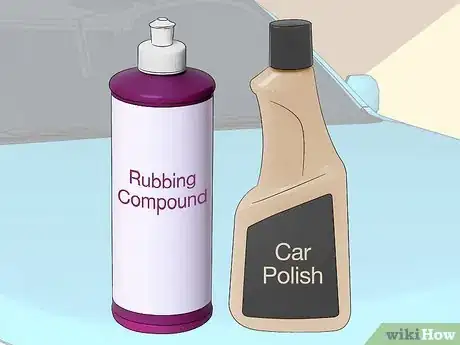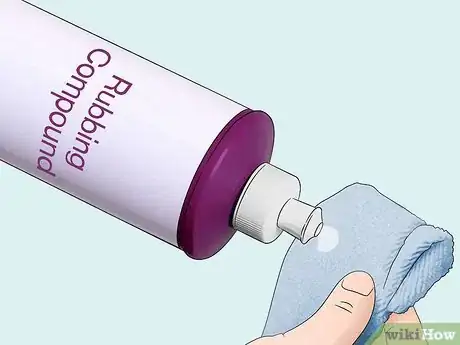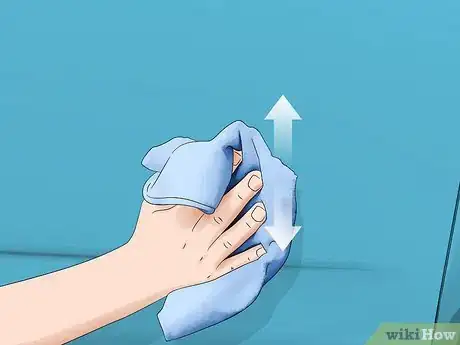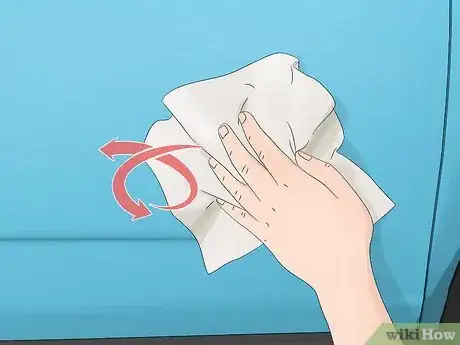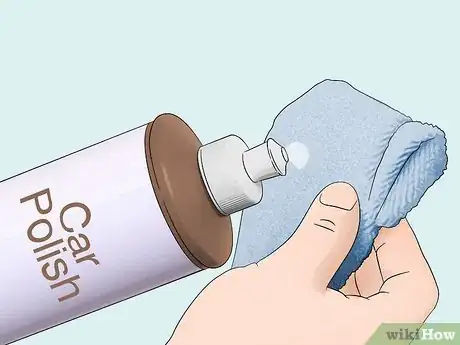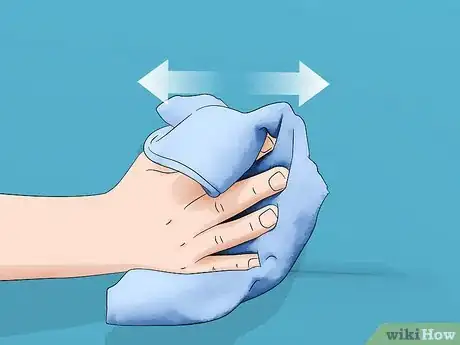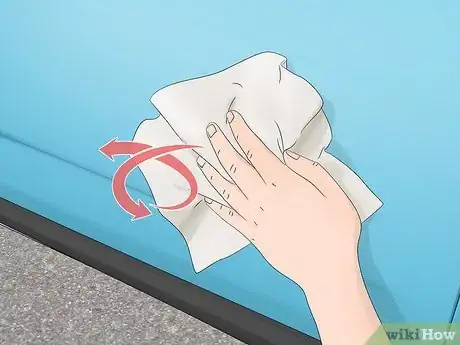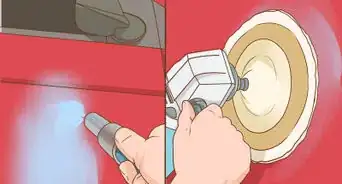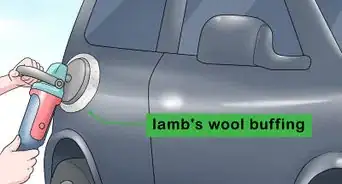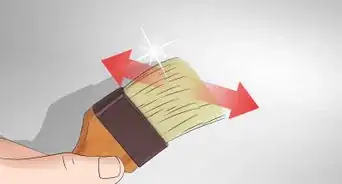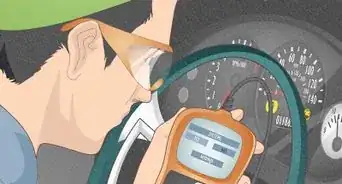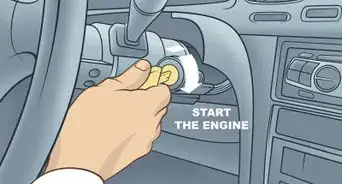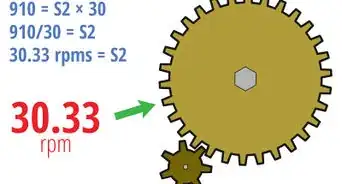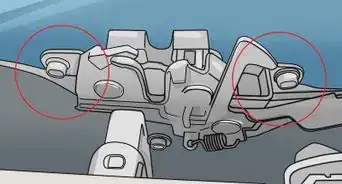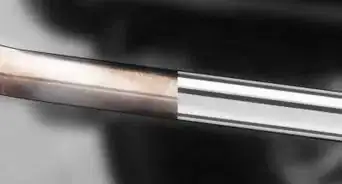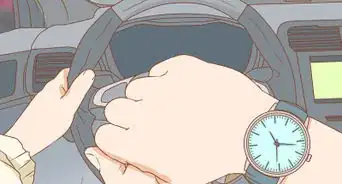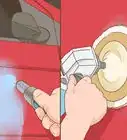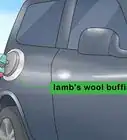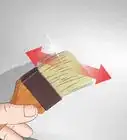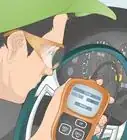This article was co-authored by Tom Eisenberg. Tom Eisenberg is the Owner and General Manager of West Coast Tires & Service in Los Angeles, California, a family-owned AAA-approved and certified auto shop. Tom has over 10 years of experience in the auto industry. Modern Tire Dealer Magazine voted his shop one of the Best 10 Operations in the Country.
There are 10 references cited in this article, which can be found at the bottom of the page.
This article has been viewed 407,674 times.
Small, fine scratches on your car’s paint finish are annoying, but they’re pretty common, especially if your car spends most of its time in the outside elements. Fortunately, they’re also super easy to remove. But, it’s important that you do it right so you don’t make the scratches deeper and more noticeable. With the right supplies, it’s as simple as cleaning and buffing out the fine scratches so they’re no longer visible.
Steps
Cleaning the Scratched Area
-
1Hose down the area to rinse off dirt from the surface. Take your hose and aim a concentrated jet directly onto the scratches. Spray the area well so it’s nice and wet and the water is able to blast out any small particles of dust and dirt that may be lodged in the tiny scratches so they don’t get further embedded when you polish the surface.[1]
- Don’t worry, spraying the fine scratches won’t make them worse or damage your paint.
-
2Scrub the scratched area using soapy water and a sponge. Fill a medium-sized bucket about halfway full of water, add a few drops of automotive soap into 1 of your buckets, and mix it well so it’s nice and soapy. Take a clean sponge, soak it in the bucket of soapy water, and squeeze out the excess water. Gently scrub the scratched surface using circular motions to remove any dirt or residue from the paint and in the scratches.[2]
- Automotive soap, or car soap, is specially formulated to clean the clear coat that protects your paint, making it the best choice for you to use to prepare the surface for you to remove the fine scratches.
- Dip the sponge back into the soapy water and wring it out well whenever you need to apply more.
- Avoid scrubbing vigorously over the scratches. Just gently rub the surface to clean it.
Advertisement -
3Wipe off the soap with your sponge soaked in clean water. Empty out the soapy water and refill the bucket with clean water. Dip your soapy sponge into the bucket of clean water to remove the soap from it and to soak up the water. Squeeze out the excess and gently rub the scratched surface to remove any soap that was left behind.[3]
Note: The soapy residue could affect the quality of your polish, so it’s really important that you remove it after you wash out the scratches.
-
4Dry the area with a clean cloth. The scratched area needs to be completely dry before you apply any polish, so take a clean, dry cloth and gently wipe the area to remove any water from the surface. Continue wiping until it’s fully dry to the touch.[4]
Applying Polish
-
1Choose a rubbing compound and polish designed for cars. Rubbing compound is used to repair damage to paint by filling fine scratches to replace the topcoat on your car’s paint. Car polish also helps to eliminate fine scratches and swirls, as well as restoring the shine of your car’s paint. Use both of them to safely and gently remove fine scratches from the paint on your car.[5]
- Look for rubbing compound and car polish at your local auto supply shop or by ordering them online.
-
2Apply a quarter-sized amount of rubbing compound to a microfiber pad. Use a microfiber pad so the threads or cloth won’t deepen the scratches. Add a small amount of the rubbing compound to the center of the pad. Fold it onto itself a few times and then open it back up to spread the compound evenly over the surface of the pad.[6]
- A small amount of compound goes a long way, even for large areas of fine scratches.
Tip: If you can’t use a microfiber pad, use a microfiber or a lint-free cloth instead.
-
3Rub the scratches in an up-and-down motion to apply the compound. Take your microfiber pad with your rubbing compound and place it against the scratched surface. Use up-and-down motions to spread the compound deep into the small scratches. Move the pad along the entire scratched area to fill them with the compound.[7]
- Continue rubbing the scratches until there isn’t anymore compound left on the pad.
-
4Buff the scratches with a clean microfiber pad. Use gentle, circular motions to buff the scratched area and remove the excess rubbing compound from the surface. Continue buffing the surface until there isn’t anymore compound and the paint is bright and shiny.[8]
- Don’t scrub the paint too hard or you may remove some of the compound from the scratches.
- You’ll notice the scratches are looking better already!
-
5Apply a dab of car polish to a clean microfiber pad. Use a separate microfiber pad than the one you used to apply the compound and apply a quarter-sized dollop to the center of the pad. Fold the pad over itself and then open it back up to spread the polish evenly over the surface of it.[9]
-
6Wipe the polish over the scratches using a back and forth motion. Use the opposite motion you used to apply the compound to spread the polish over the surface of the scratched paint. Rub the pad back and forth, from left to right, to spread the polish over the paint. Continue wiping until the polish is spread over the entire scratched area.[10]
- A small dab of polish is more than enough to polish the scratched area so you don’t need to add any more to the microfiber pad.
-
7Use a clean microfiber pad to buff out the polish. The polish will leave small streaks on the surface, so take another clean microfiber pad and use soft, circular motions to gently buff out the scratches. Continue buffing until the polish is no longer visible and your car’s paint is shiny and scratch-free.[11]
Warnings
- Using a pad with a scrubbing or abrasive surface will damage your paint’s clear coat finish. Always use microfiber pads or cloths to remove fine scratches.⧼thumbs_response⧽
- Avoid using spray paint to paint over scratches on your vehicle. Always use automotive paint.[13]⧼thumbs_response⧽
Things You’ll Need
- 2 medium-sized buckets
- Automotive soap
- Sponge
- Clean cloth
- Rubbing compound
- Car polish
- Microfiber pads or cloths
References
- ↑ https://www.thedrive.com/car-detailing/29008/how-to-hand-wash-a-car
- ↑ https://guidetodetailing.com/damage-repair/how-to-remove-clearcoat-scratches/
- ↑ https://www.thedrive.com/car-detailing/29008/how-to-hand-wash-a-car
- ↑ https://youtu.be/ggp0yaiYgFo?t=76
- ↑ https://www.popularmechanics.com/cars/how-to/g173/how-to-fix-a-car-paint-scratch/
- ↑ https://guidetodetailing.com/damage-repair/how-to-remove-clearcoat-scratches/
- ↑ https://youtu.be/m6i8rBrv9Es?t=77
- ↑ https://youtu.be/m6i8rBrv9Es?t=126
- ↑ https://youtu.be/m6i8rBrv9Es?t=150
- ↑ https://youtu.be/m6i8rBrv9Es?t=193
- ↑ https://youtu.be/m6i8rBrv9Es?t=229
- ↑ Tom Eisenberg. Auto Technician. Expert Interview. 26 July 2019.
- ↑ Tom Eisenberg. Auto Technician. Expert Interview. 26 July 2019.
